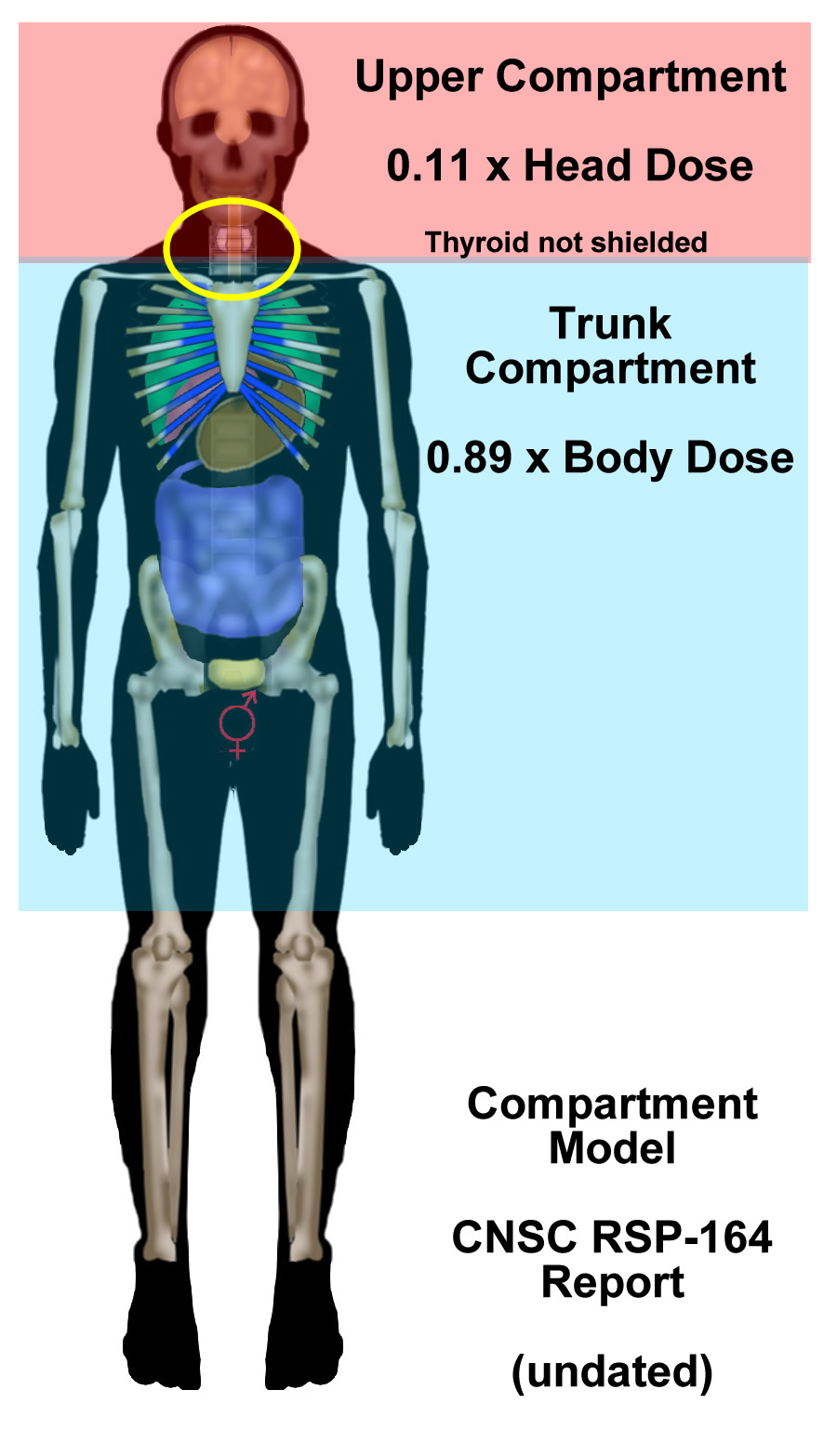Effective Dose: Basic Concepts
  |
Effective Dose (ED) Calculators
When workers are exposed to uniform x-ray sources, it is relatively easy to monitor their radiation dose and ensure they are working within prescribed limits. When workers wear lead aprons and thyroid collars during their work with x-ray, they do not receive uniform exposure over their body, and it becomes more complicated to determine if they comply with limits. To deal with that complexity, the concept of "Effective Dose" was created. Simply, estimating Effective Dose means mathematically converting a non-uniform exposure into an equivalent uniform exposure. The Effective Dose is then compared to dose limits. Effective Dose is calculated based on the premise that whenever radiation detriment affects a human, it occurs in some organ or tissue. A human being is the sum of their organs and tissues, so if the whole person is equated to a value of 1, the radiation sensitivity of each organ or tissue can be assigned a relative radiation sensitivity value so that the sum of all organ and tissue sensitivities equals 1. These organ/tissue sensitivities are called Tissue Weighting Factors. Tissue Weighting Factors are determined through epidemiological data and consequently, they change over time because of different analysis of data or because of shifts in epidemiological data. Data shifts happen because humans are long-lived, and radiation effects are weak and may take 20 - 40 years to manifest. To calculate effective dose, a) one must determine the absorbed dose to each organ or tissue that has been assigned a tissue weighting factor, b) each organ/tissue absorbed dose must be multiplied by its tissue weighting factor, and c) the results for each organ/tissue must be added together. Radiation workers are issued radiation dosimeters to track their effective dose. Because x-ray workers often wear lead aprons in the course of their duties, they are assigned two dosimeters. One is to measure dose to the trunk of their body (the body dosimeter). This is worn between the waist and chest and it is worn beneath the lead apron when one is worn. The second dosimeter is to measure radiation dose to their head (the collar or head dosimeter). This must be worn at collar level, on the outside of the thyroid collar when one is worn. Estimating Effective Dose from dosimeter readings is complicated because:
Use at your own risk. |